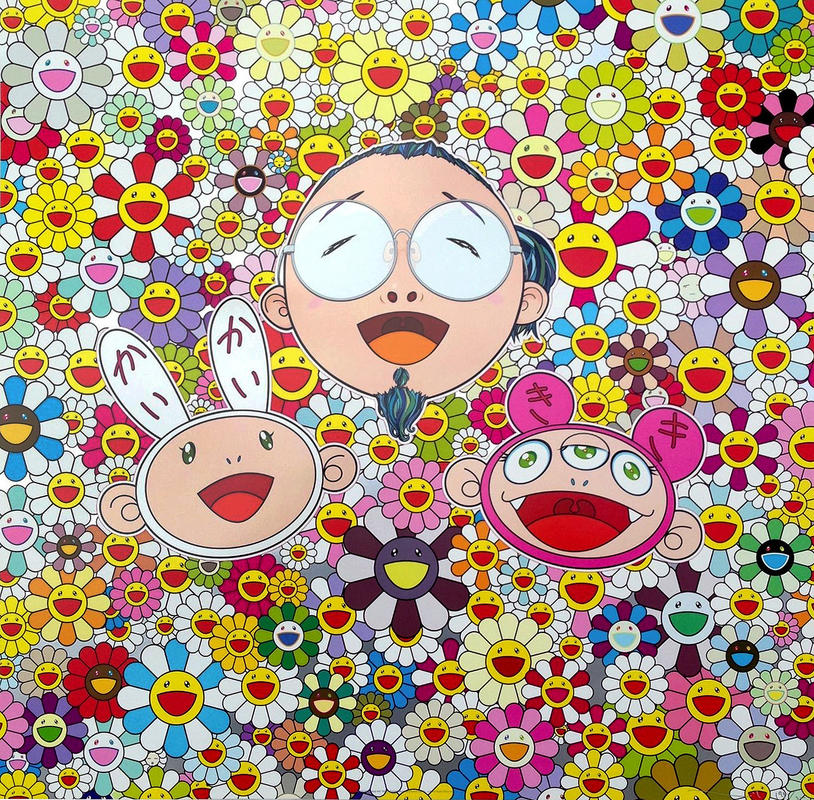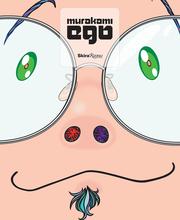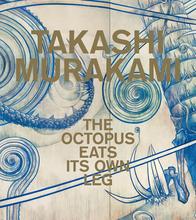More about Me and Kaikai and Kiki
- All
- Info
- Shop

Contributor
Takashi Murakami sure does love him some trippy visuals.
Though honestly, that’s what makes Murakami’s artwork so interesting for both sober and (extremely) not sober viewers alike. These prints have no immediately discernable grand meaning or message behind them, but rather exemplify the ‘Superflat’ style Murakami developed. Superflat refers to both my description of Kentucky and a postmodern art movement where he represents traditional Japanese graphic media as dimensionless, shallow, and compressed.
That’s not to say artwork utilizing the Superflat style are devoid of meaning. Murakami self-describes this style as a reflection of Japanese consumerism, using bright, attractive colors to draw the eyes of the viewer towards the piece. Exhibitions have even included shelves and mannequins mirroring those of Tokyo store displays to describe this theme. However, Superflat has been used as a flexible means of expression with artists describing sexual fetishism or the fear of growing up with Superflat. Perhaps, then, the initial lack of apparent meaning in Me and Kaikai and Kiki is more purpose than coincidence.
Even more interesting is the characters in the artwork itself. I would tell you what they are, but I’m still not even sure myself. The monkey with bunny ears, Kaikai, and the demon monster from the ninth circle of hell, Kiki, both represent Murakami’s company as its mascots. Their inclusion within this artwork perpetuates the both the artist’s brand and thus reflects the consumerism Murakami seeks to describe in his own expression of the Superflat style.













